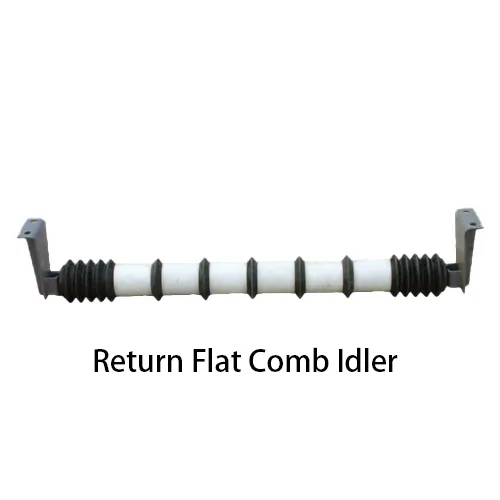 Afrikaans
Afrikaans  Albanian
Albanian  Amharic
Amharic  Arabic
Arabic  Armenian
Armenian  Azerbaijani
Azerbaijani  Basque
Basque  Belarusian
Belarusian  Bengali
Bengali  Bosnian
Bosnian  Bulgarian
Bulgarian  Catalan
Catalan  Cebuano
Cebuano  Corsican
Corsican  Croatian
Croatian  Czech
Czech  Danish
Danish  Dutch
Dutch  English
English  Esperanto
Esperanto  Estonian
Estonian  Finnish
Finnish  French
French  Frisian
Frisian  Galician
Galician  Georgian
Georgian  German
German  Greek
Greek  Gujarati
Gujarati  Haitian Creole
Haitian Creole  hausa
hausa  hawaiian
hawaiian  Hebrew
Hebrew  Hindi
Hindi  Miao
Miao  Hungarian
Hungarian  Icelandic
Icelandic  igbo
igbo  Indonesian
Indonesian  irish
irish  Italian
Italian  Japanese
Japanese  Javanese
Javanese  Kannada
Kannada  kazakh
kazakh  Khmer
Khmer  Rwandese
Rwandese  Korean
Korean  Kurdish
Kurdish  Kyrgyz
Kyrgyz  Lao
Lao  Latin
Latin  Latvian
Latvian  Lithuanian
Lithuanian  Luxembourgish
Luxembourgish  Macedonian
Macedonian  Malgashi
Malgashi  Malay
Malay  Malayalam
Malayalam  Maltese
Maltese  Maori
Maori  Marathi
Marathi  Mongolian
Mongolian  Myanmar
Myanmar  Nepali
Nepali  Norwegian
Norwegian  Norwegian
Norwegian  Occitan
Occitan  Pashto
Pashto  Persian
Persian  Polish
Polish  Portuguese
Portuguese  Punjabi
Punjabi  Romanian
Romanian  Russian
Russian  Samoan
Samoan  Scottish Gaelic
Scottish Gaelic  Serbian
Serbian  Sesotho
Sesotho  Shona
Shona  Sindhi
Sindhi  Sinhala
Sinhala  Slovak
Slovak  Slovenian
Slovenian  Somali
Somali  Spanish
Spanish  Sundanese
Sundanese  Swahili
Swahili  Swedish
Swedish  Tagalog
Tagalog  Tajik
Tajik  Tamil
Tamil  Tatar
Tatar  Telugu
Telugu  Thai
Thai  Turkish
Turkish  Turkmen
Turkmen  Ukrainian
Ukrainian  Urdu
Urdu  Uighur
Uighur  Uzbek
Uzbek  Vietnamese
Vietnamese  Welsh
Welsh  Bantu
Bantu  Yiddish
Yiddish  Yoruba
Yoruba  Zulu
Zulu conveyor guide roller
Understanding Conveyor Guide Rollers A Key Component in Material Handling Systems
Conveyor guide rollers are essential elements in various material handling systems, playing a crucial role in ensuring the smooth and efficient operation of conveyor belts. These rollers serve multiple functions, including guiding, supporting, and stabilizing the movement of materials as they traverse through a conveyor system. In this article, we will delve into the significance, types, and advantages of using conveyor guide rollers.
Conveyor systems are widely employed in industries ranging from manufacturing and warehousing to logistics and food processing. As materials are transported from one point to another, the reliability of the system is paramount to efficiency and productivity. This is where conveyor guide rollers come into play. Designed to keep the conveyor belt on track, these rollers prevent misalignment and ensure that materials are transported safely and effectively.
One of the primary types of conveyor guide rollers is the fixed guide roller. These rollers are stationary components that guide the conveyor belt in a specific direction. They are typically installed along the edges of the conveyor system to minimize the risk of the belt drifting off course. Fixed guide rollers are made from a variety of materials, such as rubber or plastic, to accommodate different friction and wear requirements, based on the materials being transported.
conveyor guide roller

Another common type is the adjustable guide roller, which allows for some flexibility in alignment. This feature is particularly beneficial in systems where the load may shift or change during operation. Adjustable guide rollers enable operators to easily modify the position of the rollers to ensure optimal tracking of the conveyor belt. This adjustability not only enhances performance but also extends the lifespan of both the conveyor system and the materials being conveyed.
The construction of conveyor guide rollers is also an important consideration. Rollers are typically designed to withstand significant wear and tear, as they are subject to continuous contact with the conveyor belt and the materials being transported. High-quality materials and precision engineering are critical factors in the durability of guide rollers. Standard options include steel, which offers strength but may require additional protective coatings, and lightweight alternatives like aluminum or composite materials, which can reduce overall system weight and improve efficiency.
In addition to their guiding function, conveyor guide rollers contribute to overall system efficiency by reducing friction and minimizing wear on the conveyor belt. This not only enhances the lifespan of the conveyor system but also reduces maintenance costs. Moreover, the smooth operation enabled by properly functioning guide rollers contributes to increased productivity, as machines can run at optimal speeds without interruptions caused by misalignment.
In conclusion, conveyor guide rollers are indispensable components of modern material handling systems. Their ability to guide, support, and stabilize conveyor belts ensures that materials are moved efficiently and safely throughout industrial operations. By investing in high-quality guide rollers and maintaining them properly, businesses can significantly enhance the reliability and productivity of their conveyor systems. As industries continue to evolve and expand, so too will the technological advancements in conveyor solutions, making guide rollers an essential focus for improving operational efficiency.
-
Revolutionizing Conveyor Reliability with Advanced Rubber Lagging PulleysNewsJul.22,2025
-
Powering Precision and Durability with Expert Manufacturers of Conveyor ComponentsNewsJul.22,2025
-
Optimizing Conveyor Systems with Advanced Conveyor AccessoriesNewsJul.22,2025
-
Maximize Conveyor Efficiency with Quality Conveyor Idler PulleysNewsJul.22,2025
-
Future-Proof Your Conveyor System with High-Performance Polyurethane RollerNewsJul.22,2025
-
Driving Efficiency Forward with Quality Idlers and RollersNewsJul.22,2025





























